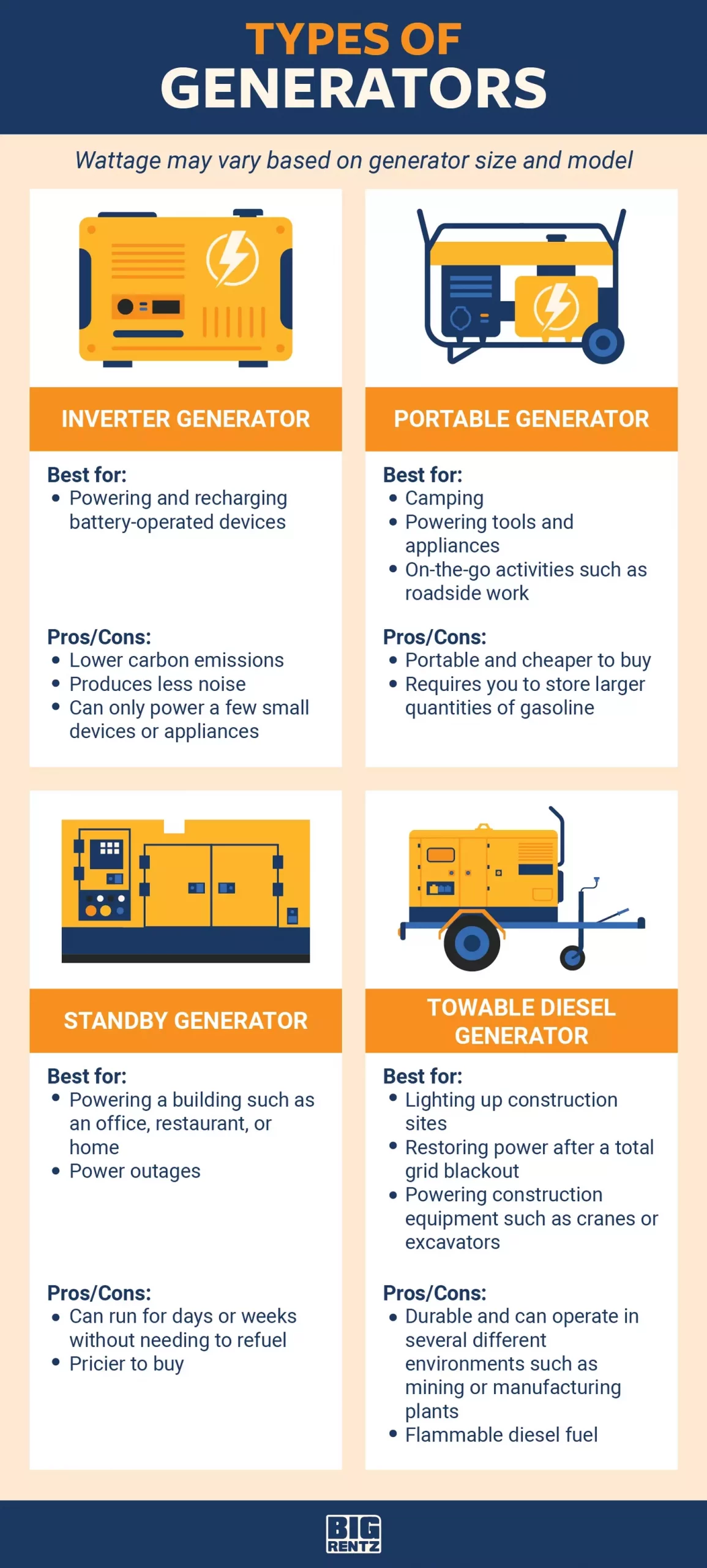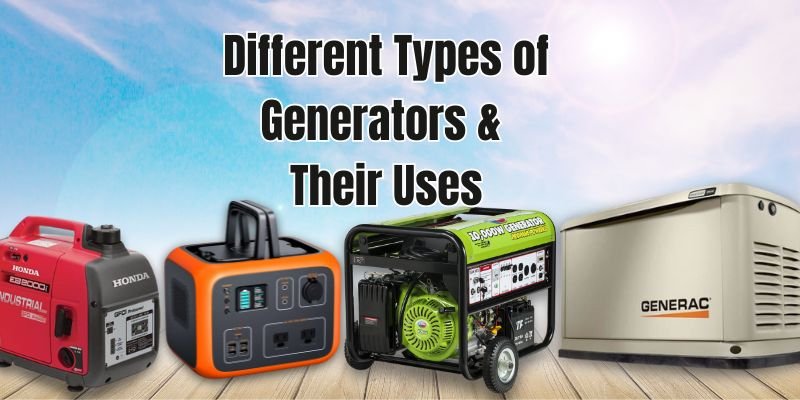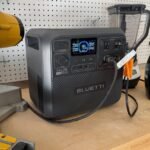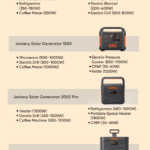Disclosure: This post contains affiliate links and I will be compensated if you make a purchase after clicking through my links. Learn More
To run a sump pump, you need a generator with enough power. The right size depends on the pump’s horsepower and wattage.
Choosing the correct generator for your sump pump is crucial. Without the right size, your pump may fail during a power outage. This can lead to basement flooding and costly damage. Generators come in various sizes and wattage capacities. Matching the generator’s power output to your sump pump ensures it operates smoothly when needed.
Understanding these requirements can save you from headaches and financial losses. In this blog post, we will guide you through selecting the appropriate generator size for your sump pump. This will help you make an informed decision and protect your home effectively.

Credit: www.bigrentz.com
Choosing The Right Generator
Selecting the right generator for a sump pump depends on the pump’s wattage. Calculate the startup and running watts of your sump pump. Ensure the generator can handle this load for reliable performance.
Choosing the right generator for your sump pump can seem daunting, but it doesn’t have to be. The key is to break down the process into manageable steps. You need to assess your power needs and consider the different types of generators available.
Assess Power Needs
First, determine the wattage your sump pump requires. Check the pump’s manual or its label for this information.
Most sump pumps need between 800 to 2,200 watts to run. Ensure your generator can handle both the running and startup wattage.
Remember, you might want to power other appliances during an outage. Add up the total wattage required to avoid overloading your generator.
Consider Generator Types
Generators come in various types, each with its pros and cons. Portable generators are versatile and easy to move around.
They are ideal for temporary use. However, they need regular refueling and can be noisy.
Inverter generators are quieter and more fuel-efficient. They provide clean power, which is safe for sensitive electronics.
But, they are typically more expensive. Standby generators are the most convenient. They automatically turn on during an outage and can power your entire home.
However, they require professional installation and are costly.
Choosing the right generator involves understanding your sump pump’s power needs and evaluating different generator types. What type of generator suits your lifestyle and budget?
Taking these steps will ensure your sump pump runs smoothly during a power outage.
Sump Pump Power Requirements
Choosing the right generator for your sump pump is crucial. It ensures your basement stays dry during power outages. You need to understand the power requirements of your sump pump. This knowledge helps you select a generator that can handle the load.
Wattage And Voltage
Sump pumps have specific wattage and voltage requirements. These requirements vary based on the model and size. Most residential sump pumps operate on 120 volts. It’s essential to check the wattage rating of your pump. This information is usually found on the pump’s label or in the user manual.
Typical sump pumps range between 500 to 1,500 watts. Knowing the wattage helps you choose a generator that can supply enough power. If the generator’s wattage is too low, the pump may not run efficiently.
Running And Starting Watts
Sump pumps need more power to start than to run continuously. This is known as starting watts versus running watts. Starting watts can be significantly higher than running watts. For example, a pump needing 800 running watts might require 1,600 starting watts.
Choosing a generator involves considering both running and starting watts. Ensure the generator can handle the initial surge of power. This ensures the pump starts and runs smoothly during power outages.
Generator Sizing Basics
Choosing the right generator for your sump pump is crucial. It ensures your pump runs smoothly during power outages. Understanding the basics of generator sizing helps you make the best choice. You need to consider several factors to find the correct generator size.
Calculate Total Load
First, determine your sump pump’s power needs. Check the pump’s label for its wattage. Most sump pumps list their power in watts. If the label shows amps, convert it to watts. Multiply the amps by the voltage (usually 120V in the US). This gives you the running wattage.
Next, consider the starting wattage. Sump pumps need more power to start than to run. This is called the surge wattage. Check the pump’s manual for this number. If not listed, estimate the surge wattage as 1.5 to 2 times the running wattage. Add the running and surge wattage to get the total load.
Include Safety Margin
Always include a safety margin. It ensures your generator can handle unexpected power spikes. A common practice is to add 20% to 25% to the total load. This extra capacity protects your generator and pump.
For example, if your total load is 1000 watts, add 250 watts for safety. Your generator should provide at least 1250 watts. This buffer helps your generator run efficiently and last longer. It also covers additional small appliances you might need.
Types Of Generators
Choosing the right generator to run your sump pump is crucial. Not all generators are created equal. Different types of generators serve different needs. Let’s delve into the primary types of generators. We will cover their benefits and limitations.
Portable Generators
Portable generators are versatile. They are easy to move and set up. This makes them convenient for temporary use. Many homeowners opt for portable generators during emergencies. They typically run on gasoline. This fuel is readily available. Portable generators usually have lower power output. They can efficiently run small appliances. They are ideal for short-term power needs.
Standby Generators
Standby generators are permanent installations. They are designed for long-term use. These generators automatically switch on during power outages. This ensures continuous power supply. Standby generators usually run on propane or natural gas.
They offer higher power output. This makes them suitable for running larger appliances. They require professional installation. Standby generators are reliable and convenient. They provide peace of mind during extended outages.
Fuel Options
A small generator, around 1000 to 2000 watts, can efficiently power a sump pump. Ensure it matches the pump’s power requirements.
When selecting a generator to run your sump pump, considering the fuel options is crucial. Different fuels have unique benefits and limitations that can impact your decision. Let’s dive into the two most common fuel types: gasoline and propane.
Gasoline Generators
Gasoline generators are a popular choice for many homeowners. They are readily available and relatively easy to use. You can find gasoline at most gas stations, making refueling convenient.
However, gasoline has its drawbacks. It can be volatile and has a shorter shelf life compared to other fuels. Storing large quantities of gasoline can also be hazardous.
Despite these concerns, gasoline generators are powerful. They can efficiently run your sump pump and other essential appliances during a power outage. If you choose this type, ensure you store gasoline safely and maintain your generator regularly.
Propane Generators
Propane generators offer a different set of advantages. Propane is a cleaner-burning fuel and has a longer shelf life. This makes it an excellent option for emergency preparedness.
Using propane can also be safer. Propane tanks are designed to be more secure, reducing the risk of spills and leaks. Plus, they are available in various sizes to suit your needs.
On the downside, propane generators can be more expensive upfront. You will also need to ensure you have a steady supply of propane, which might be less accessible than gasoline.
But if you value safety and long-term storage, propane could be the better choice for your sump pump.
When deciding between gasoline and propane, think about your priorities. Do you value convenience and power, or safety and longevity? Your choice will impact how well your generator serves you during emergencies.

Credit: happyhiller.com
Installation And Setup
When installing a generator to run your sump pump, proper setup is crucial. It ensures the system functions efficiently and reliably during power outages. Here’s how to get it right.
Proper Placement
Choosing the right spot for your generator is essential. Make sure it’s placed on a level surface to prevent it from tipping over.
Keep it away from any windows or doors to avoid carbon monoxide entering your home. It’s best to place it in a well-ventilated area.
Ensure the generator is easily accessible for maintenance. You don’t want to struggle with reaching it during an emergency.
Connection To Sump Pump
Connecting your generator to the sump pump might seem daunting, but it’s straightforward with the right steps. Use a heavy-duty extension cord to connect the generator to the sump pump.
Ensure the extension cord is rated for outdoor use and can handle the wattage. This will prevent overheating and potential fires.
Make sure all connections are secure. Loose connections can lead to inefficient power supply and potential damage to your equipment.
Have you ever had to deal with a flooded basement due to a power outage? Installing a generator can save you from that hassle. Imagine the peace of mind knowing your sump pump will keep running no matter what.
Maintenance Tips
Maintaining your generator to run a sump pump efficiently can save you a lot of headaches, especially during a power outage. Regular maintenance ensures your generator works when you need it most. Below are some practical tips to keep your generator in top shape.
Regular Inspection
Inspect your generator regularly to catch minor issues before they become major problems. Check the oil levels and ensure there are no leaks. Keeping an eye on the air filters is crucial as clogged filters can reduce efficiency.
Set a reminder to run your generator at least once a month. This keeps the engine parts lubricated and ensures the battery stays charged. During these runs, pay attention to any unusual sounds or vibrations.
Are you noticing any rust or corrosion? These can be signs of moisture buildup. Cleaning and drying these areas can prevent further damage.
Fuel Storage
Storing your fuel properly can make a big difference in your generator’s performance. Use fuel stabilizers to extend the life of your stored fuel. This is particularly important if you only use your generator occasionally.
Keep your fuel tank full to avoid condensation buildup. This can prevent rust and ensure your generator starts smoothly when needed. Additionally, store your fuel in a cool, dry place to maintain its quality.
Have you ever thought about labeling your fuel containers with the purchase date? This helps you keep track of fuel age and ensures you use the oldest fuel first.
By following these maintenance tips, you can ensure your generator is ready to power your sump pump whenever you need it. What steps will you take today to maintain your generator?
Safety Precautions
When using a generator to run a sump pump, always prioritize safety. Generators can pose various risks if not handled properly. Here are key safety precautions you must take.
Carbon Monoxide Risks
Generators emit carbon monoxide, a colorless and odorless gas. Running a generator indoors can be deadly. Always use your generator outdoors. Place it at least 20 feet away from windows and doors. This prevents carbon monoxide from entering your home.
Proper Usage
Read the user manual before using your generator. Follow all guidelines to ensure safe operation. Never overload your generator. Overloading can cause it to overheat or fail. Connect the sump pump directly to the generator. Avoid using extension cords whenever possible.
Keep your generator dry. Operating it in wet conditions can lead to electric shock. Ground your generator properly to avoid electrical hazards. Make sure your hands are dry before touching the generator. This prevents accidental shocks.

Credit: www.bigrentz.com
Frequently Asked Questions
How Big Of Generator Do I Need To Run A Sump Pump?
To run a sump pump, you typically need a generator with at least 2000 watts. Check the pump’s wattage for accurate requirements.
Will A 1000 Watt Generator Run A Sump Pump?
A 1000 watt generator can run a sump pump if the pump’s starting and running watts are below the generator’s capacity. Check the sump pump’s wattage requirements to ensure compatibility.
Will A 1500 Watt Generator Run A Sump Pump?
A 1500 watt generator can run a sump pump, but ensure the pump’s starting wattage doesn’t exceed 1500 watts.
How Many Watts Does A Sump Pump Need To Run?
A sump pump typically needs between 500 to 1,500 watts to run. The exact wattage depends on the pump’s size and model.
Final Words
Choosing the right generator for your sump pump is vital. It ensures your basement stays dry during power outages. Remember to check your pump’s power needs. Match the generator’s capacity to these needs. This avoids overloading and ensures smooth operation.
Always opt for a reliable brand. Regular maintenance keeps your generator in top shape. Investing in the right generator brings peace of mind. Your home remains protected from water damage. Make a wise choice. Keep your basement safe and dry.








